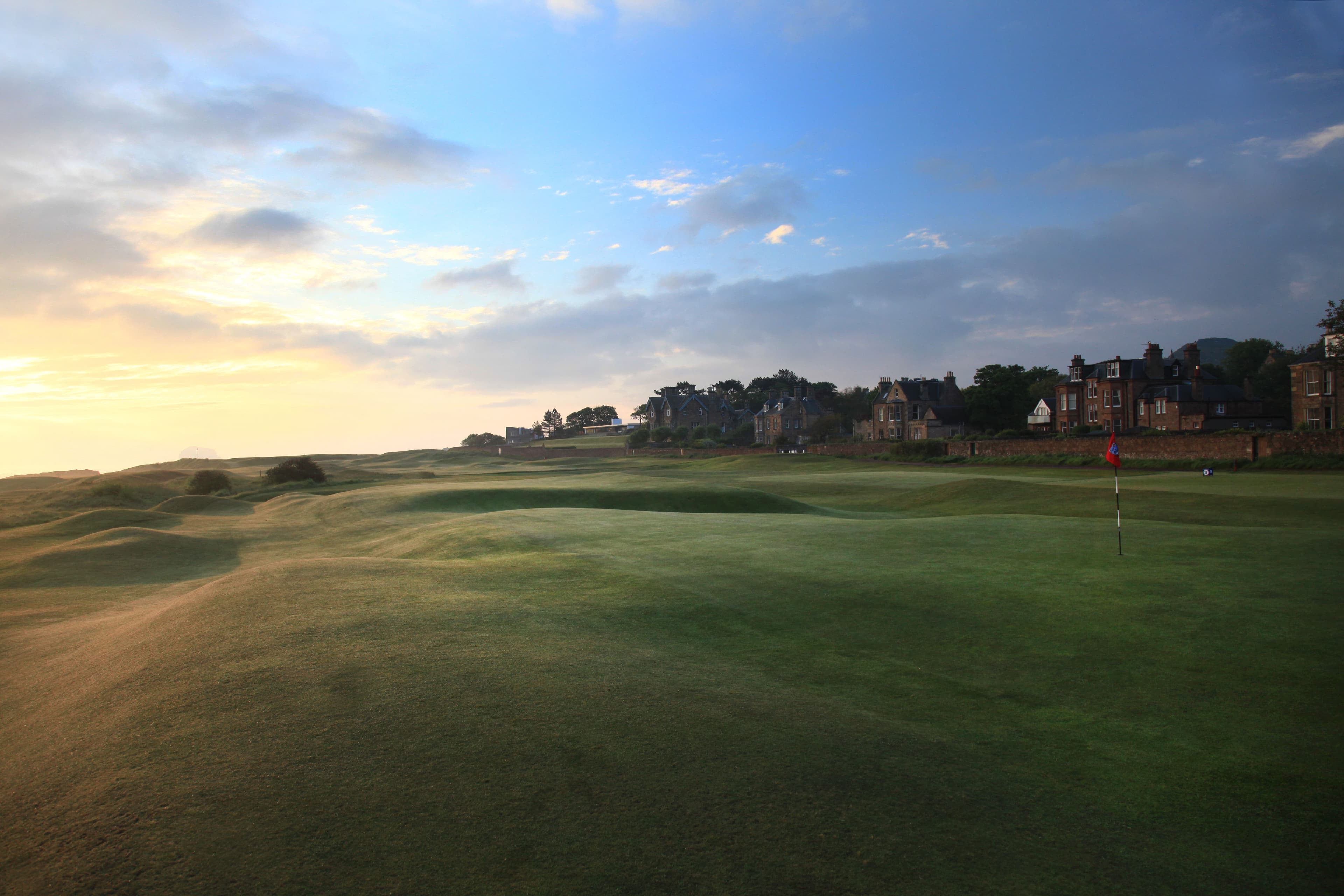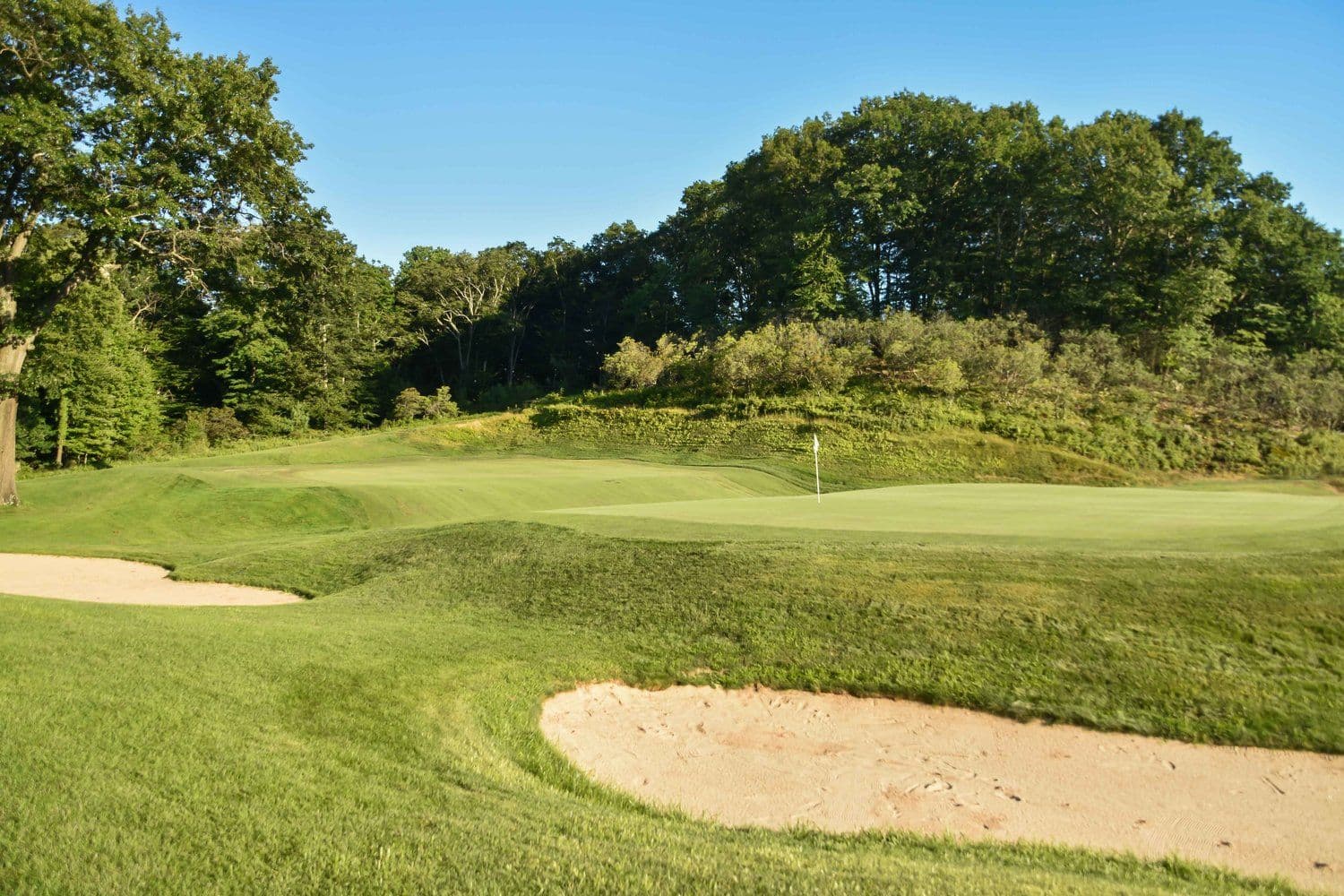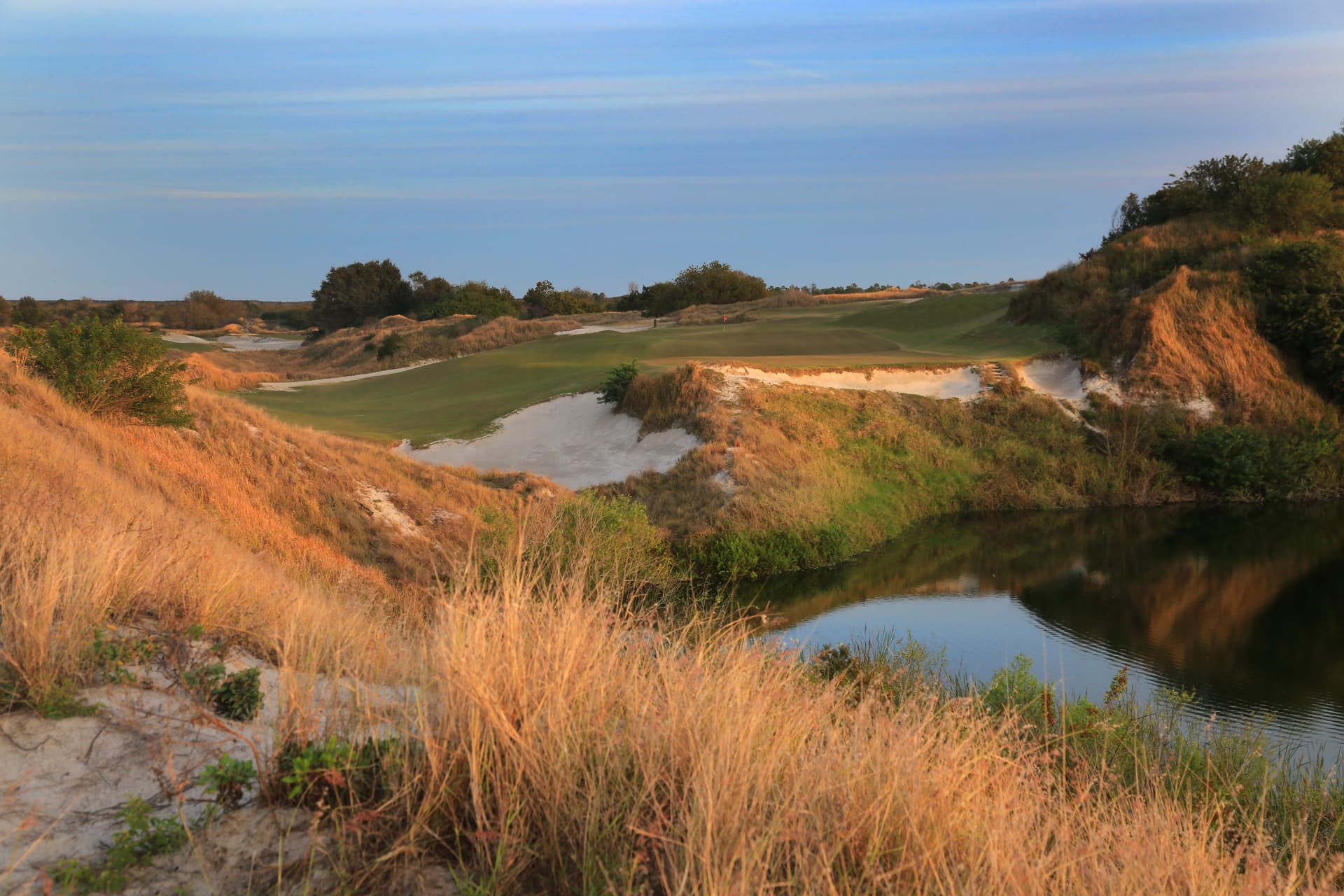
Biarritz – Template Holes
A Biarritz hole is one of golf's most theatrical par 3s: a long carry to a massive, elongated green bisected by a dramatic swale or depression that divides the putting surface into two distinct plateaux. Named after the French seaside resort where the original hole once stood, the Biarritz has challenged golfers and sparked architectural debate for over a century.
Most template holes replicated by C.B. Macdonald—the father of American golf course architecture, who pioneered copying famous holes and adapting them to new sites—and his disciples draw inspiration from originals in the British Isles, the homeland of golf. The Biarritz is a rare exception, most commonly traced back to the south-west coast of France, in the region of the same name. There, Tom and Willie Dunn Jr. crafted one of the most famous and infamous par 3s in history.
The Original: A Hole Lost to History
The "Chasm" hole (the current name for the template is derived from its original host club, not the original hole name) at Golf de Biarritz Le Phare featured a heroic carry over the titular chasm, approximately 160 yards, to a massive putting surface. The third hole's target area featured two large flat zones—one at the front and one towards the rear—divided by a drastic swale running between them, and guarded at the sides by bunkering. It is believed that only the rear platform was ever pinned—totalling between 210 and 240 yards—making the hole essentially a test of a player's ability to hit both long and straight (this was certainly a driver during the Dunn brothers' time in the 1880s).
The rest of the putting surface's dimensions are largely conjecture, as the original lasted only four years before construction of a hotel moved the teebox and took the bay out of play. The original green and hole would eventually be eliminated and, later, decimated during World War II. Furthering the mystery is the unlikelihood that Macdonald could have found himself in France during its brief existence.
All of these factors—or lack thereof—add up to occasionally contentious conversation amongst golf architecture enthusiasts about what constitutes an authentic Biarritz.
Defining Features of a True Biarritz
Whilst interpretations vary, most architecture historians agree a Biarritz should include:
- Length: 180-240 yards (though modern versions may stretch further)
- The swale: A deep depression dividing the green
- Two plateaux: Distinct front and rear landing areas, traditionally both cut to green height. Purists claim only the rear was pinned.
- Massive scale: Greens typically 60-80 yards, or more, deep
- Strategic question: Can (or should) the front plateau be pinned?
Classic Biarritz Examples
Macdonald's template showcase, the National Golf Links of America, doesn't feature the model. Instead, Long Island's Piping Rock Club hosts the designer's first Biarritz. In the absence of official documents, the Biarritz swale has traditionally been understood to fit within a range of 1 to 1.5 metres in depth, which describes Piping Rock's variant well.
Lacking a bay, Macdonald added a large bunker in front of the first plane. It's important to note that this landing area is not green, but fairway, running down into the swale, which features a similar cut. The effect is a rather micro-version of the Valley of Sin at St Andrews, forcing a tricky up-and-down recovery for shots short off the tee. These specifications inspire the most vocal arguments about whether the front could—or should—be pinned, and whether that act violates Macdonald's intentions.
It appears one person who didn't see an issue pinning the front was Seth Raynor, Macdonald's nearest disciple. His Course at Yale hosts perhaps the most famous rendition of the Biarritz, and perhaps the most dramatic as well. Players must carry nearly 200 yards of water to where the green immediately begins, through a swale, to the back plateau. To compound your problems, the green tilts aggressively both front-to-back and right-to-left.

Whilst a more "dignified" template, such as the Redan, might flaunt its subtle tweaks from the original, the Biarritz seemingly encouraged imitators to push the envelope ever further.
Charles Banks created one of the longest versions at Forsgate Country Club in New Jersey, stretching to 235 yards. Not taking his nickname "Steamshovel" lightly, the designer also added Raynor-style thumbprints—shallow depressions—to both of the green's flat surfaces. The most controversial element, however? His swale can be pinned.
Getting back to Macdonald, The Creek gets a nod for its distinct rendition. Missing the green isn't enviable for any Biarritz, but The Creek's takes it to a new level via its Biarritz/Island hybrid. It's a big target, but tee shots are easily pushed by aggressive winds into the Long Island Sound inlet.
Modern Interpretations
The naturalist tendency of the 21st century has made this template a less-likely choice for new courses, but a few true Biarritzes have emerged. One of the more straightforward versions is the 16th at Streamsong's Red Course in Florida, featuring a 70-yard green that plays between the property's dunes.

Tom Doak included a Biarritz-based hole at Bandon Dunes' Old Macdonald, but the Oregon resort's naturalist aesthetic raises some doubts amongst purists. The green does take a pill shape and features a swale through the middle. On either side of the swale, however, Doak enacts rolling features more in keeping with his Pacific Dunes design than the relatively plain planes of traditional Biarritz. And, at 180 yards, it is short even by Dunn's old-fashioned standards.
Contested Variations: Where Does the Template End?
The most famous examples of the Biarritz don't leave much room for subtlety. Accordingly, some of the more debatable examples are guilty of underdoing rather than overdoing.
There is no doubt that a Biarritz green can accomplish its purpose as part of a long par 4 or short par 5, but two of the more notable examples raise questions about whether the template can survive a change in par. For example, A.W. Tillinghast included one at Somerset Hills Country Club in New Jersey. Perhaps because of the 13th hole's two-shot nature, his swale is much shallower than the holes referenced above. This alters the approach, but is it watered down enough to strip the "Biarritz" title? The architecture community remains divided.
The "Gate" hole at North Berwick Golf Club in Scotland does more than inspire questions about the nature of the Biarritz; it inspires questions as to the template's origin story. The approach shot on this par 4 is much shorter than a typical Biarritz, but the green is much more severe. Similar to the course's iconic Redan, the green tilts down from front-right to back-left, and is divided by a gully reaching Yale-level depths.

If the concept alone weren't enough to stir the pot, some suggest that Gate may be the true inspiration behind the Biarritz. North Berwick was founded in 1832, and Macdonald had decisively visited, unlike the Chasm hole. Two facts take some wind out of this theory, however: first, most historians agree that Gate was added in the 1930s, and it's suspected that Bernard Darwin didn't mention the green during his 1920s visit. Second, Macdonald named the template "Biarritz," not "Berwick."
The Bottom Line
Despite the mystery surrounding its origins and the ongoing debate about what constitutes an authentic example, the Biarritz remains one of golf architecture's most compelling templates. At its best, it presents a thrilling all-or-nothing shot that separates the bold from the cautious—a test of both distance and precision that has captivated golfers for well over a century. Whether you believe the front plateau should be pinned or consider North Berwick the true inspiration, Biarritz's dramatic swale continues to spark conversation and challenge players at some of the world's finest courses.
Originally written by R Book.
Edited by J Miners.